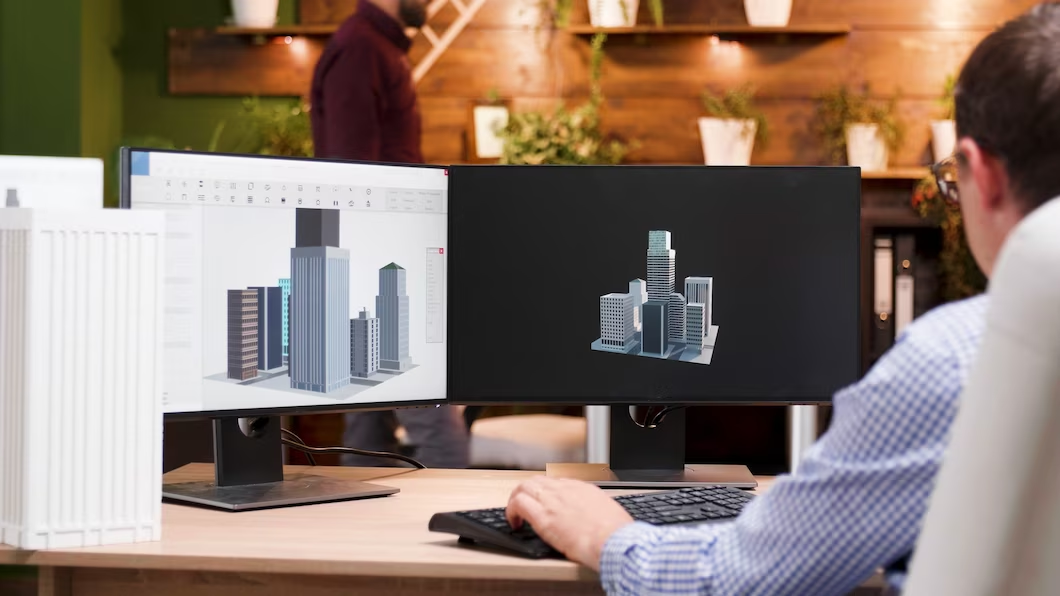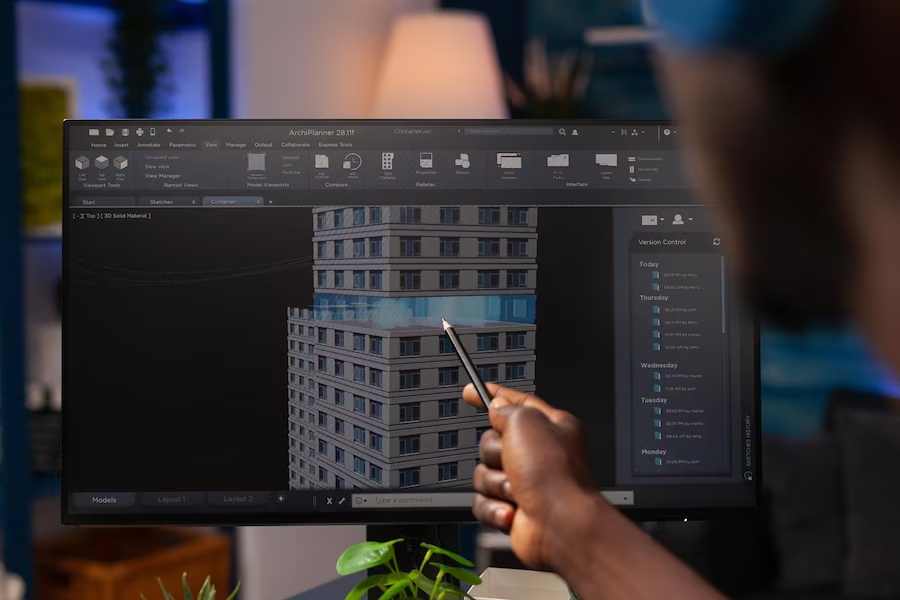Read an insightful BIM narrative from Ar. Pragya Sanghavi, Partner at Pentaspace Design Studio, Mumbai and Ar. Vinod Singhi, Founder and Principal Architect at BASICS Architects, New Delhi

BIM, or Building Information Modeling, is an innovative technology that allows architects and contractors to create a 3D model of the entire building. This technology is revolutionizing the construction industry with its ability to speed up the construction process helping in creating detailed construction schedules. With the help of BIM models, architects and contractors can plan their work more effectively, resulting in faster construction times and reduced costs.
BIM is changing the way construction is done, and it allows architects and developers to see every detail of the building before it’s even built. This helps them to identify any potential issues early on, which can save a lot of time and money in the long run. BIM is not just a tool but a game-changer for the construction industry.
Ar. Pragya Sanghavi, Partner at Pentaspace Design Studio, Mumbai, and Ar. Vinod Singhi, Founder and Principal Architect at BASICS Architects, New Delhi, share insights on this technology and the way it has been useful to them in construction.

The efficiency and accuracy that BIM provides are helping contractors and architects to complete projects on time and within budget. On this, Ar. Vinod Singhi says, “We have been working with BIM since last year, and from the moment we started using it, we were immediately impressed with its potential. The shift from imagining a built-up space solely through 2D drawings to experiencing it in a 3D perspective has been transformative for our design process. I must say it has been a game-changer for our design consultancy firm”.
Pentaspace Design Studio has also been using BIM for one-two year. Ar. Pragya Sanghavi voices, “BIM has helped us to visualize and design our projects better. It’s a very powerful tool for designing and construction. Additionally, with the rise of parametric architecture, it will help us in designing our projects more confidently in the future”.
“BIM has completely transformed the way we approach projects. One of the most exciting aspects is the enhanced collaboration it brings. We can all work together in a virtual environment, sharing real-time information and making decisions more efficiently,” adds Ar. Singhi.
In the past, it was mainly architects who used BIM for designing and planning large projects. However, in recent years, the use of BIM has expanded to encompass the entire construction process, with even consultants adopting it as a core tool in their workflow. There are now consultants that specialize in BIM modeling alone. BIM allows for better accuracy and coordination between architects, engineers, and contractors, resulting in fewer errors during construction.

The benefits of this tool were once only seen in large-scale projects, but now even standalone buildings are benefiting from its use. Developers are now recognizing the value of incorporating BIM into their projects from the beginning so they can ensure that their projects are designed with accuracy and efficiency in mind, resulting in a higher-quality end product.
Ar. Sanghvi says, “At Pentaspace, we used BIM in a hybrid project. For us, it was fantastic because we could minimize the errors in the designing stage itself. We could collaborate with the consultants, generate clash reports, and justify the design concurrently. All this helped us in cutting down extra time and effort required in the conventional rectification process and also save the cost. Earlier, the construction industry was very unorganized, but with the help of such tools, it has become much more efficient. So I think it is a need to have these tools as a part of the industry”.
The technology has spread even in tier 2 and tier 3 cities, where the developers are using AI along with BIM which exposes the next-gen in the construction industry. The tool is not only convenient for architects and developers but even for the end users and the clients. It allows them to communicate better about the designs with clients and make the structures come to life even before construction begins.

“We have used BIM in a couple of commercial projects, it has enabled us efficient space planning, accurate cost estimation, clash detection, and improved coordination among various stakeholders, leading to smoother construction processes and better outcomes,” expresses Ar. Singhi.
With the advent of AI, the industry is becoming much more effective and efficient. Virtual reality is also emerging as a new tool for visualization and enhancing design. By integrating AI with BIM, we can further enhance the visualization process by providing accurate data on building performance. Parametric structures are becoming increasingly popular in India, and with the integration of AI and BIM, we can achieve better results with these structures. As these technologies continue to evolve, it is essential for industry professionals to stay updated on the latest trends and developments to remain competitive and efficient.
“We feel that the future of BIM is bright, with advancements in VR and AR integration. This will allow us a greater real-time interaction with our designs, and help us delivering efficient and sustainable projects,” concludes Ar. Singhi.
Building Information Modeling has helped to speed up the construction process, reduce costs, and increase efficiency, and accuracy. The level of detail and precision that BIM provides is unmatched in the industry. As more consultants and agencies adopt BIM as a core tool in their workflow, it is clear that this technology is here to stay. The benefits of using BIM have made it an essential part of the modern construction industry. As technology continues to advance, we will likely see even more innovative uses for BIM in the future.




Leave a Reply
Your email is safe with us.